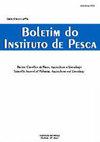巴西南部海岸即将进行的虾类养殖的空间规划:沿海管理的一个工具
IF 0.6
4区 农林科学
Q4 FISHERIES
引用次数: 0
摘要
地理信息系统,多准则评估的集成技术,与层次分析法一起,被认为是决策支持描述和预测不同项目实施的位置。在巴西,虾类养殖在东北和北部地区已经巩固了30多年,并正在东南部兴起。本研究的目的是通过空间规划对巴西里约热内卢州北弗鲁米嫩塞地区虾类养殖场的建立进行分析、分类和量化。最终模型的组成被分为两个层次类别,因子和约束。因子模型分为五个子模型:取水、环境、交通、公共和经济基础设施。反过来,限制由城市化地区、环境保护区组成。最好的地区被认为是那些平坦、靠近河流、与环境子模型标准相关的地区(21%);其次是公共、经济和取水基础设施的子模型(20%),以及权重最低的交通运输(17%)。分析表明,该区域虾类养殖的潜力很大,估计总面积为628,088公顷,分类为充足或非常充足(> 0.6)。本文章由计算机程序翻译,如有差异,请以英文原文为准。
Spatial planning for forthcoming shrimp farming in southern coast of Brazil: a tool to coastal management
Geographic information systems, the integration technique of multi-criteria assessment, together with the analysis hierarchy process, are recognized in decision support to describe and predict locations for implementation of different projects. In Brazil, shrimp farming has been consolidated for more than 30 years in the Northeast and North regions and is emerging in the Southeast. The purposes of this study were to analyze, classify and quantify through spatial planning for the establishment of shrimp farming in the North Fluminense region of the state of Rio de Janeiro, Brazil. The composition of the final model was structured into hierarchical categories with two models, factors, and constraints. The model of factors was subdivided into five sub-models: water abstraction, environmental, transport, public, and economic infrastructure. In turn, restrictions were composed of urbanized areas, environmental reserves. The best areas were identified as those that were flat, close to rivers, related to theenvironmental sub-model criteria (21%); followed by the sub-models of public, economic, and water abstraction infrastructure (20%), and transport with the lowest weight attributed (17%). The analyses indicated a great potential for the implementation of shrimp farming in the region, estimated in a total area of 628,088 ha, classified as adequate or very adequate (> 0.6).
求助全文
通过发布文献求助,成功后即可免费获取论文全文。
去求助
来源期刊

Boletim do Instituto de Pesca
FISHERIES-ZOOLOGY
CiteScore
0.80
自引率
0.00%
发文量
24
审稿时长
>12 weeks
期刊介绍:
To publish original articles of research and short communications in the following áreas: Fisheries, Aquaculture, Zootechnology, Limnology, Oceanography, Biology and Pathology of aquatic organisms. The publication depends on the approval of the Editorial Board, based on the peer review.
 求助内容:
求助内容: 应助结果提醒方式:
应助结果提醒方式:


